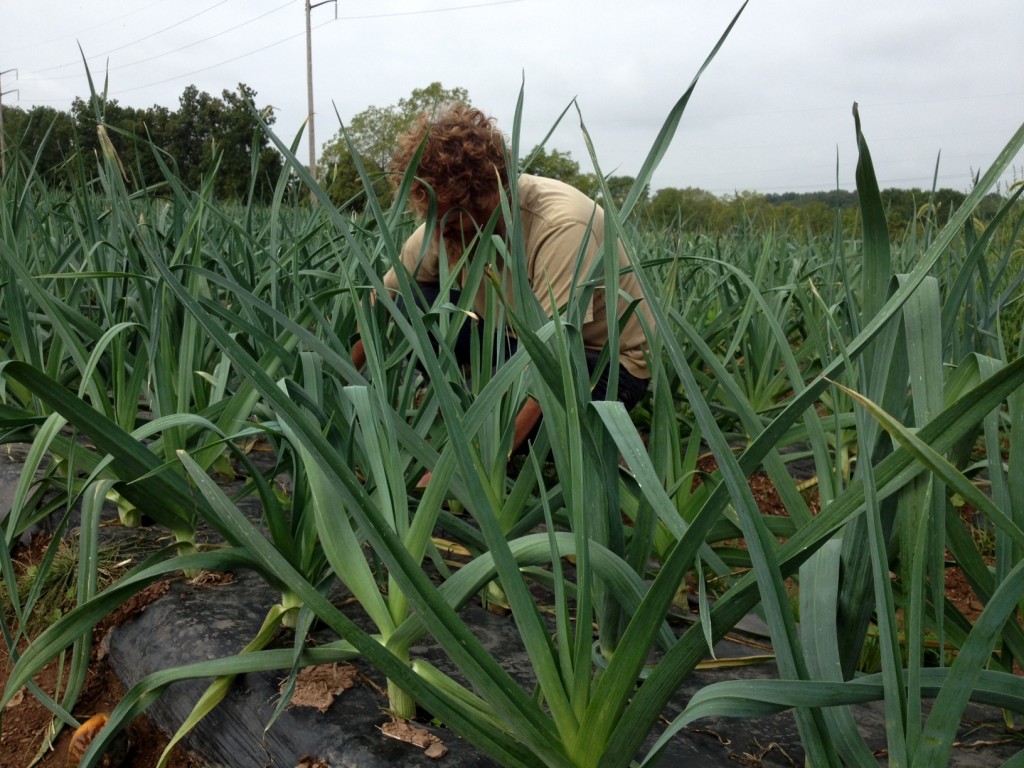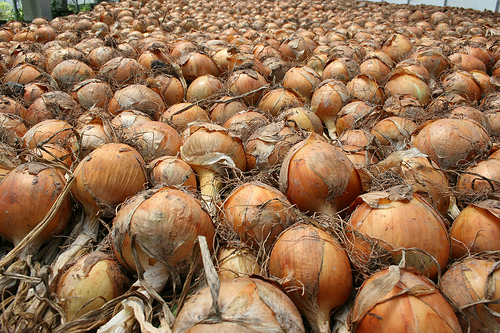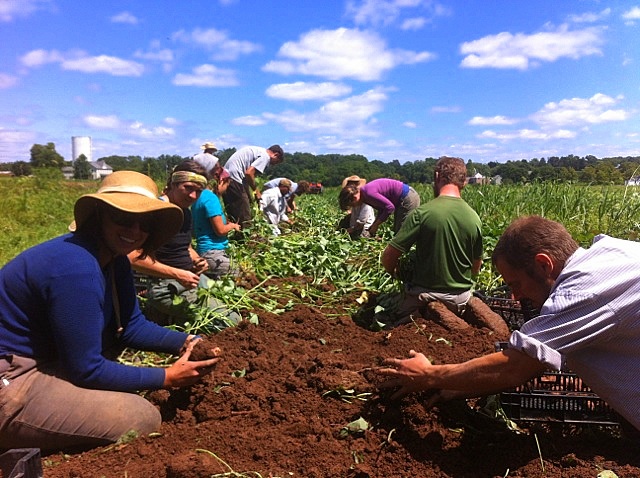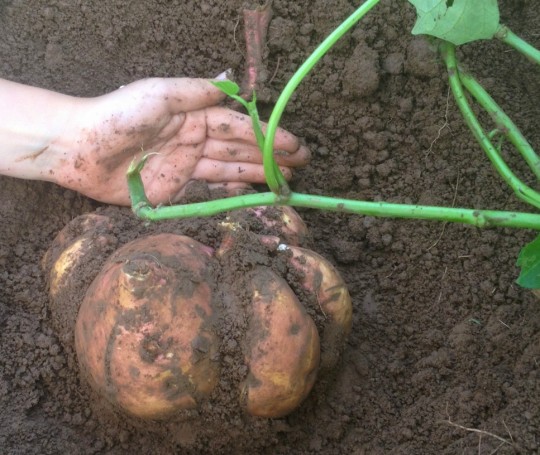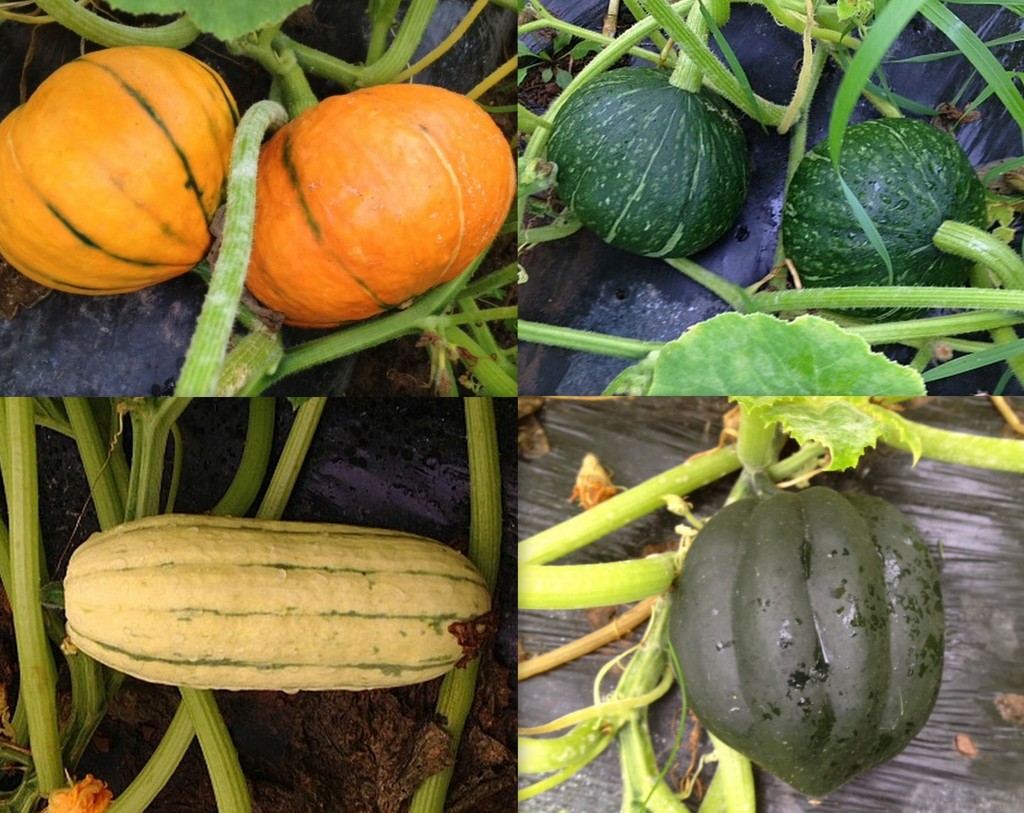09 Sep Reading, Writing…Radicchio?
Fourth grade teacher Jared Grace reflects on his summers as a farm hand at Blooming Glen.
Over the last two summers, I have had the privilege of being a member of the crew at Blooming Glen Farm. As a CSA member for the last four years, I have had the unique opportunity to be on both sides of the operation. It has been an incredible experience for me, as well as for my wife, Aimee, who also shares a strong passion for supporting local farmers and living and eating well.
I grew up in South Perkasie, minutes from these vast fields that have become the beautiful landscape of the farm. I spent a large majority of my childhood outdoors – building forts, fishing, playing Wiffle Ball, and generally, doing what boys do. I spent 10 years, during my middle school, high school, and college summers, working at Clair’s Flowers, in town. While most of my friends thought I was insane for choosing to work in the 100+ degree conditions of the greenhouse all day, I absolutely loved every minute. All the dirt, sweat, and dizzying heat was worth it, when I’d look out and see how beautiful everything was growing. I believe these early life experiences of working in the dirt and feeling the pride that comes with a hard day’s work led me to my eventual time at Blooming Glen Farm.
Nine years ago, with Aimee’s encouragement and support, I entered the field of education. While I have experience teaching all of grades K-6, I have primarily been a 6th and now 4th Grade teacher. Among all the topics I teach, and all the hats I wear in a day, one of the greatest joys of being a teacher is sharing my passions with students and seeing their faces light up when they are connecting to what I’m saying. Having now added farming to my repertoire, many lively conversations occur in my classroom. My school district’s curriculum includes a reading thematic unit on “Living Green”. Topics include the “3 R’s” of reducing, reusing, and recycling, composting, and the health and community benefits of consuming locally grown produce. Needless to say, this is where my enthusiasm skyrockets! I am thoroughly delighted to be an authority on the topic of living and eating well!
My time at BGF has been invaluable to my teaching of these topics to kids. In addition to discussion, I have learned that children love to be actively involved in growing, choosing, and cooking food. Kids practically jump out of their seats at the opportunity to share stories of cooking, composting, canning, or recycling with their parents and siblings. I cannot emphasize how important it is for parents, family members, teachers, etc. to talk to kids about the benefits of being a wise consumer, not only for their own well being, but also for the greater good of their communities. It has also been important to share and discuss the harmful effects of not taking care of the Earth.
While sharing stories and teaching children about the process of organic farming is exhilarating in its own right, my work experience at Blooming Glen Farm has also had a positive impact on how I live my personal life. I have been blessed with spending many hours working under the sun and enjoying the sights, sounds, and smells of nature all around me. Though farm work is, without a doubt, the most physically demanding I’ve ever done, each task was completed with pride by sharing the workload with some of the most amazing people I’ve met in my life. My crewmates are well-traveled, intelligent, and informed citizens. They are committed, hard workers who never complain, and my life has been enriched by their enthusiasm for sustainable agriculture, their genuine kindness, and respect they showed towards me every day.
 So, with autumn and all it’s majesty on the horizon, I must once again depart my beautiful outdoor classroom, one in which I have been a curious student every day. I now reenter the walls of my wonderful elementary school – taking with me memories of picking strawberries as the sun comes up, harvesting basil in the dark hours of the morning, learning tractor skills, taking my nieces on a farm tour, having spirited conversations with fellow crew, and enjoying every minute of seeding, planting, weeding, harvesting, and eating a bounty of delicious, soul-satisfying food…and getting filthy in the process!
So, with autumn and all it’s majesty on the horizon, I must once again depart my beautiful outdoor classroom, one in which I have been a curious student every day. I now reenter the walls of my wonderful elementary school – taking with me memories of picking strawberries as the sun comes up, harvesting basil in the dark hours of the morning, learning tractor skills, taking my nieces on a farm tour, having spirited conversations with fellow crew, and enjoying every minute of seeding, planting, weeding, harvesting, and eating a bounty of delicious, soul-satisfying food…and getting filthy in the process!
Post and photos courtesy of Jared Grace.















